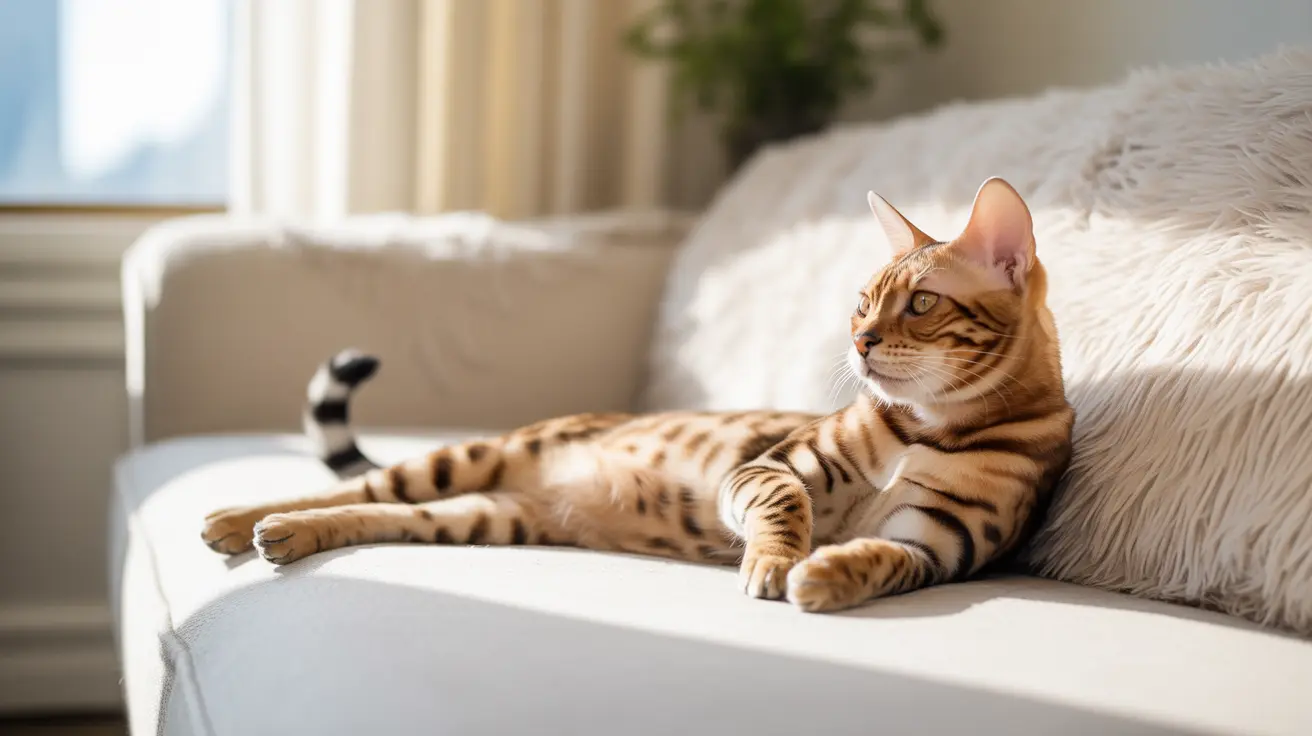Normal Causes of Cat Twitching
Many instances of cat twitching while awake are completely natural and harmless. Cats have a highly sensitive muscle layer along their back that responds to various stimuli:
- Touch and physical stimulation
- Excitement or anticipation
- Communication with other cats or humans
- Normal muscle reflexes during stretching
- Response to grooming
These natural twitches typically appear as brief, mild muscle movements, particularly along the back or flanks, and usually resolve quickly without intervention.
Medical and Skin-Related Causes
Parasites and Skin Conditions
Sometimes, twitching can indicate underlying skin issues or parasitic infections:
- Flea infestations
- Allergic reactions
- Dry skin
- Ear mites
- Dermatitis
These conditions often cause localized twitching accompanied by scratching, excessive grooming, or visible skin irritation.
Neurological Conditions
More serious causes of twitching may include neurological disorders:
- Feline Hyperesthesia Syndrome (FHS)
- Seizures
- Nerve inflammation
- Muscle disorders
FHS, also known as "twitchy cat syndrome," causes episodes of intense skin rippling, excessive grooming, and sometimes aggressive behavior.
Signs That Require Veterinary Attention
While some twitching is normal, certain symptoms warrant immediate medical attention:
- Violent or sustained twitching
- Loss of consciousness
- Aggressive behavior during episodes
- Excessive grooming leading to hair loss
- Twitching accompanied by vocalization or distress
- Multiple episodes within a short period
How to Monitor Your Cat's Twitching
Keep track of your cat's twitching episodes by noting:
- Frequency and duration
- Accompanying symptoms
- Triggers or patterns
- Body areas affected
- Your cat's behavior before and after episodes
This information can help your veterinarian determine whether the twitching is normal or requires treatment.
Preventive Measures and Management
To help minimize problematic twitching:
- Maintain regular flea prevention
- Keep your cat's environment stress-free
- Provide proper nutrition
- Schedule regular veterinary check-ups
- Monitor for skin issues or parasites
Frequently Asked Questions
Why is my cat twitching while awake, and when is it normal behavior?
Cat twitching while awake is often normal, especially when triggered by excitement, touch, or communication. Brief, mild twitches along the back or flanks are typically harmless. However, frequent or severe twitching may indicate an underlying issue.
Could my cat's twitching be caused by skin parasites or allergies?
Yes, skin parasites like fleas or allergic reactions can cause twitching, usually accompanied by scratching, excessive grooming, or visible skin irritation. These issues require appropriate treatment to resolve the twitching.
What is feline hyperesthesia syndrome, and how does it cause twitching in cats?
Feline hyperesthesia syndrome is a neurological condition causing intense skin sensitivity, resulting in rippling skin, twitching, and sometimes aggressive behavior. Episodes typically last 20-30 seconds and may require veterinary management.
When should I worry about my cat's twitching and seek veterinary care?
Seek veterinary care if twitching is severe, frequent, accompanied by other symptoms like aggression or hair loss, or if your cat shows signs of distress. Any sudden changes in twitching patterns should be evaluated.
How can emotional states like anxiety or excitement cause my cat to twitch?
Cats' sensitive nervous systems respond to emotional states with physical reactions. Excitement or anxiety can trigger muscle twitches through the release of stress hormones and heightened nerve sensitivity.






